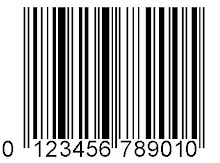LASER PRINTER
Laser printers can print text and images in high speed and high quality resolution, ranging from 600 to 1200 dpi (dot per inch).
Unlike inkjet printers, laser printer use toner (black or colored powder) instead of liquid inks. A laser printer consists of these major components such as drum cartridge, rotating mirror, toner cartridge and roller. The drum cartridge rotates as the paper is fed through. The mirror will deflect the laser beam across the surface of the drum. Then, the laser beam creates charge that causes the toner to stick to the drum. When the drum is rotates and presses on the paper, the toner is transferred from the drum to paper to create images. Rollers then use heat and pressure to fuse toner to paper. Colored laser printers add colored toner in three additional passes.
 Advantages of laser printers:
Advantages of laser printers:1) High resolution
2) High print speed
3) No smearing
4) Low cost per page (compared to inkjet printers)
5) Printout is not sensitive to water
6) Good for high volume printing
Disadvantages of laser printers:
1) More expensive than inkjet printers
2) Except for high end machines, laser printers are less capable of printing vivid colors and high quality images such as photos.
3) The cost of toner replacement and drum replacement is high
4) Bulkier than inkjet printers
5) Warm up time needed
INKJET PRINTER
Inkjet printers print text and images by spraying tiny droplets of liquid ink onto the paper. They are the most popular printers for home use.
Currently, most inkjet printers use either thermal inkjet or piezoelectric inkjet technology. The heating elements are use to heat liquid ink to form vapor bubble, which forces the ink droplets onto the paper through the nozzle. Most inkjet manufacturers use this technology in consumer inkjet printers.
Thermal inkjet printers use aqueous ink. Aqueous ink is a mixture of water, glycol and dyes. These inks are inexpensive but they can only be used on paper or specially coated materials. Piezoelectric inkjet printers allow the use of a wider range of inks, such as solvent inks, UV-curable inks, dye sublimation inks, and can print text and graphics on different uncoated materials.
INKJET HEAD DESIGN
The inkjet head design is also divided into two main group which are fixed-head and disposable head. Fixed-head is built in the printer and will be permanent in it. It produces more accurate output than cheap disposable head. The ink cartridges for fixed head printers are also cheaper as the print head does not need to be replaced. However, if the head is damaged, the entire printer has to be replaced.
Disposable head is included in replacement the ink cartridge. It must be replaced each time an ink cartridge runs out of ink. This increases the cost of ink cartridges and also limits the use of high quality print head in these cartridges. However, a damaged print head is not a problem as one can easily replace it with a new ink cartridge.
Some printer manufacturers use disposable ink and disposable print head separately. The print head can last much longer than cheap disposable head and is suitable for high volume printing. However, it can also be replaced easily if the head is clogged or damaged.
Advantages of inkjet printers:
1) Low cost
2) High quality of output, capable of printing fine and smooth details
3) Capable of printing in vivid color, good for printing pictures
4) Easy to use
5) Reasonably fast
6) Quieter than dot matrix printer
7) No warm up time
Disadvantages of inkjet printers:
1) Print head is less durable, prone to clogging and damage
2) Expensive replacement ink cartridges
3) Not good for high volume printing
4) Printing speed is not as fast as laser printers
5) Ink bleeding, ink carried sideways causing blurred effects on some papers
6) Aqueous ink is sensitive to water; even a small drop of water can cause blurring
7) Cannot use highlighter marker on inkjet printouts
IRIS PRINTER
Iris printers use a patented continuous inkjet technology to produce consistent, continuous-tone, photorealistic output on several varieties of paper, canvas, silk, linen and other low-fiber textiles. Iris prints are best for their color accuracy and ability to match printing and proofing standards. Furthermore, this printer also known for their low-cost consumables compared to other technologies.
Originally developed by Iris Graphics, the hardware and technology was acquired by pre-press and imaging leader Scitex in 1990, itself then purchased by Creo Products Inc. in 2000 to spur its digital workflow forward. In 2005, Kodak purchased Creo and continued to offer the product.
SOLID INK PRINTER
Solid ink printer uses solid wax inks that are melted to a liquid before being used. Instead of jetting the ink onto the paper directly as inkjet printers do, solid ink printers jet the ink onto a drum. A better registration of color is obtained by transferring the ink to the drum first and then to the printer, because the drum can be more tightly controlled than moving paper.













2 comments:
Hi its Nice info
Nice
Post a Comment